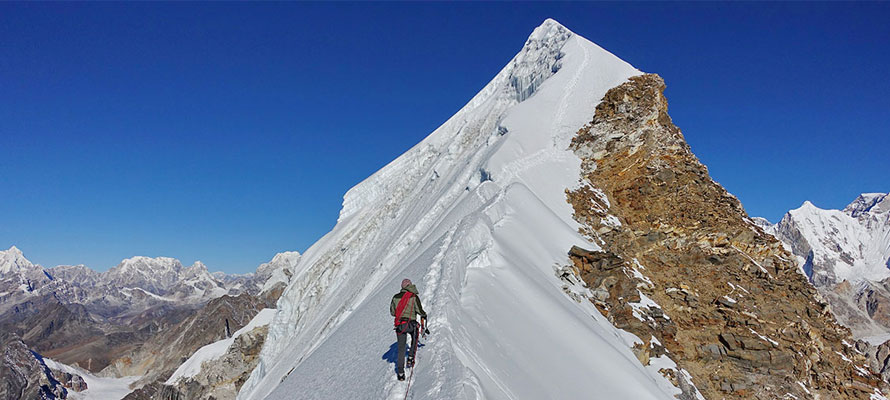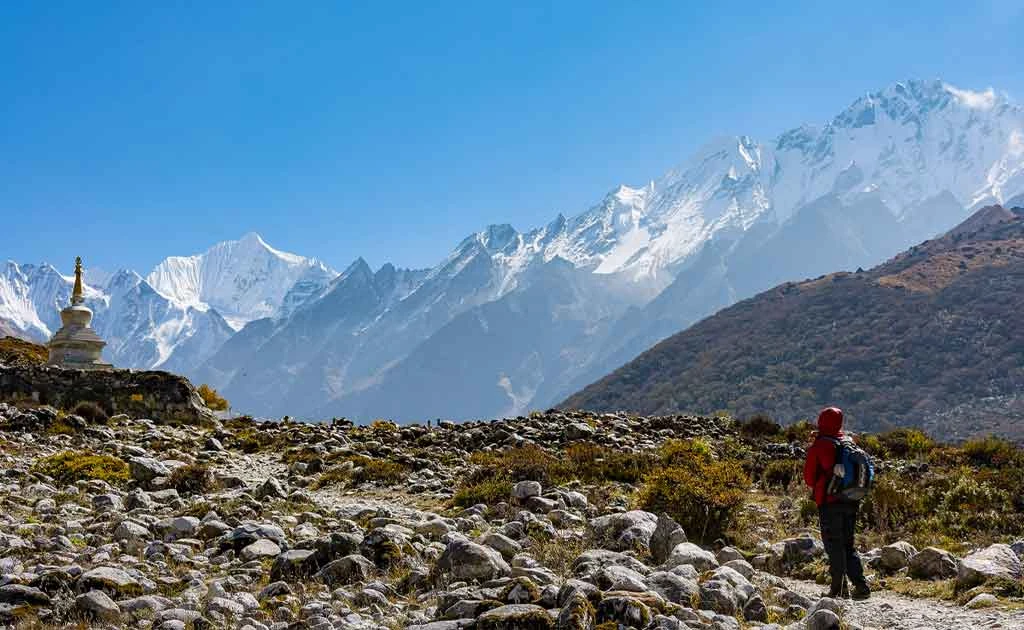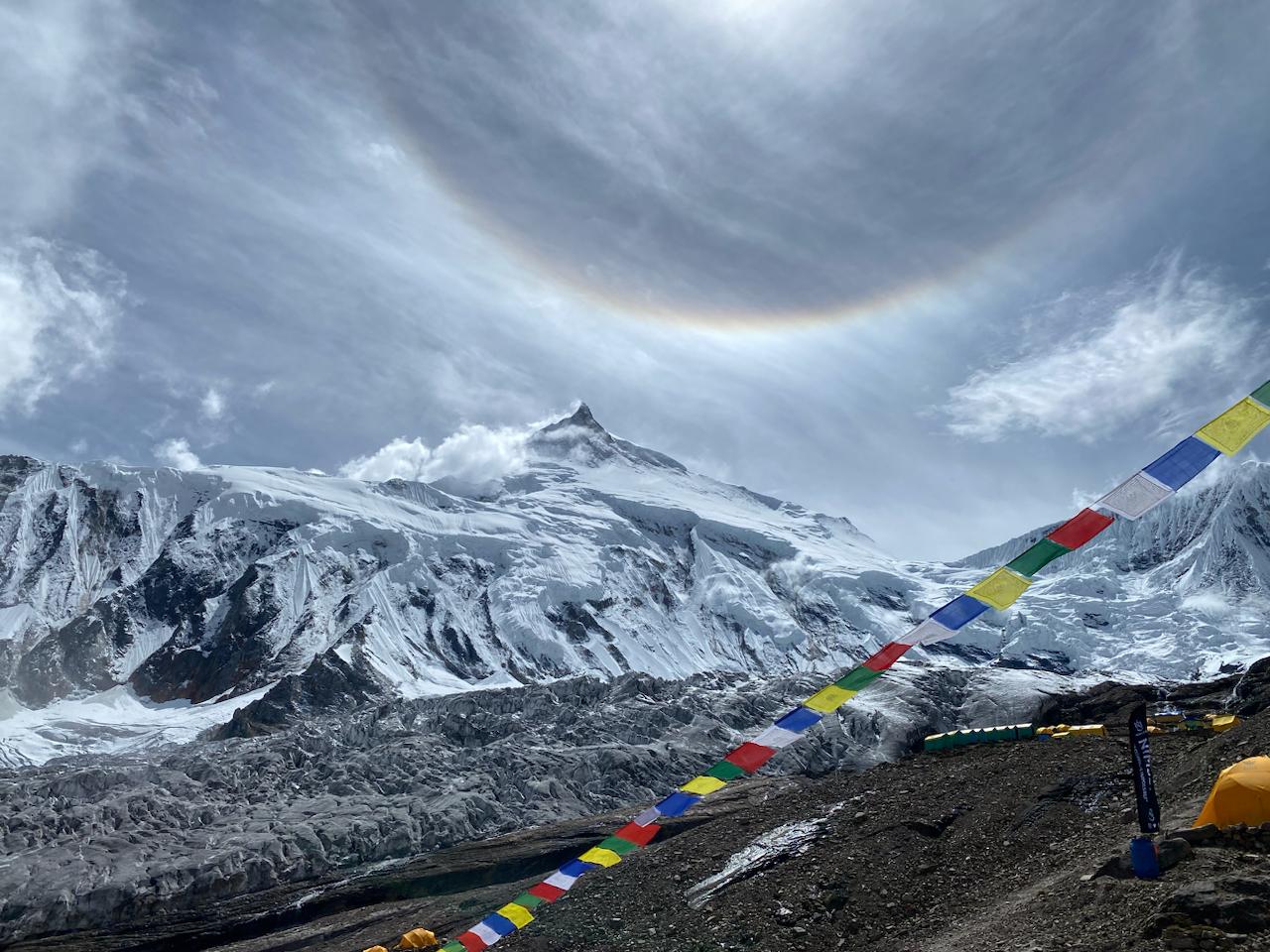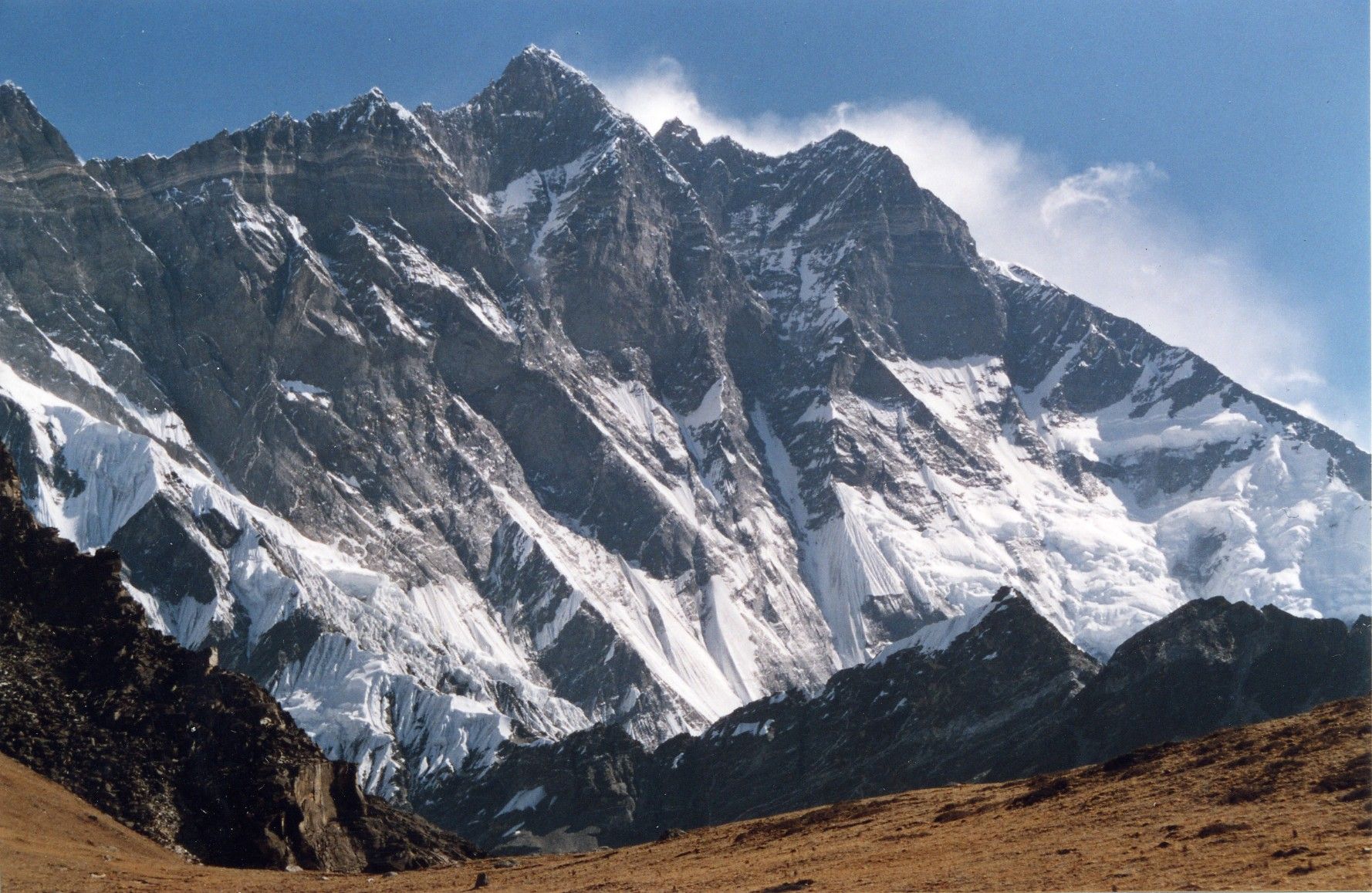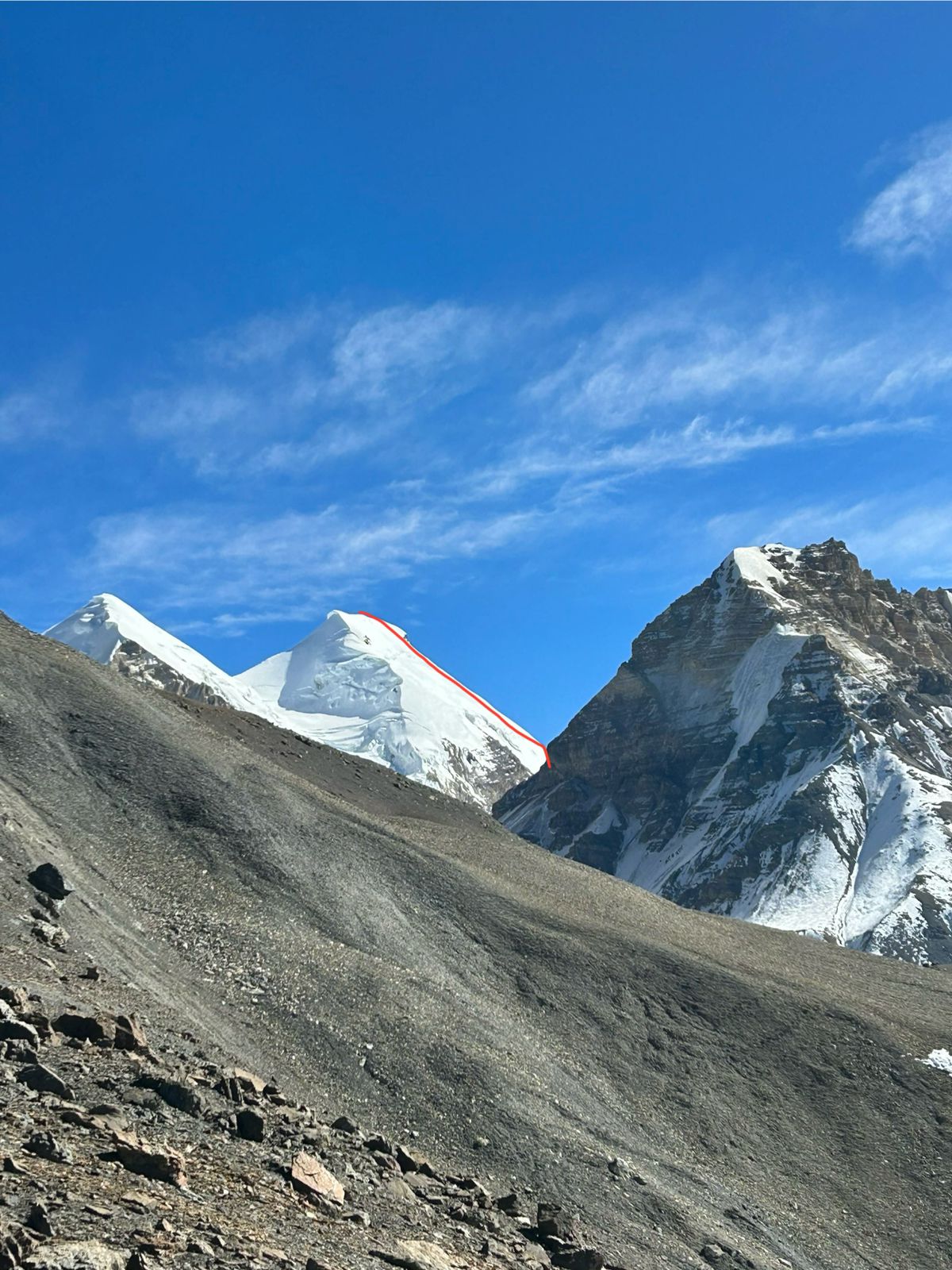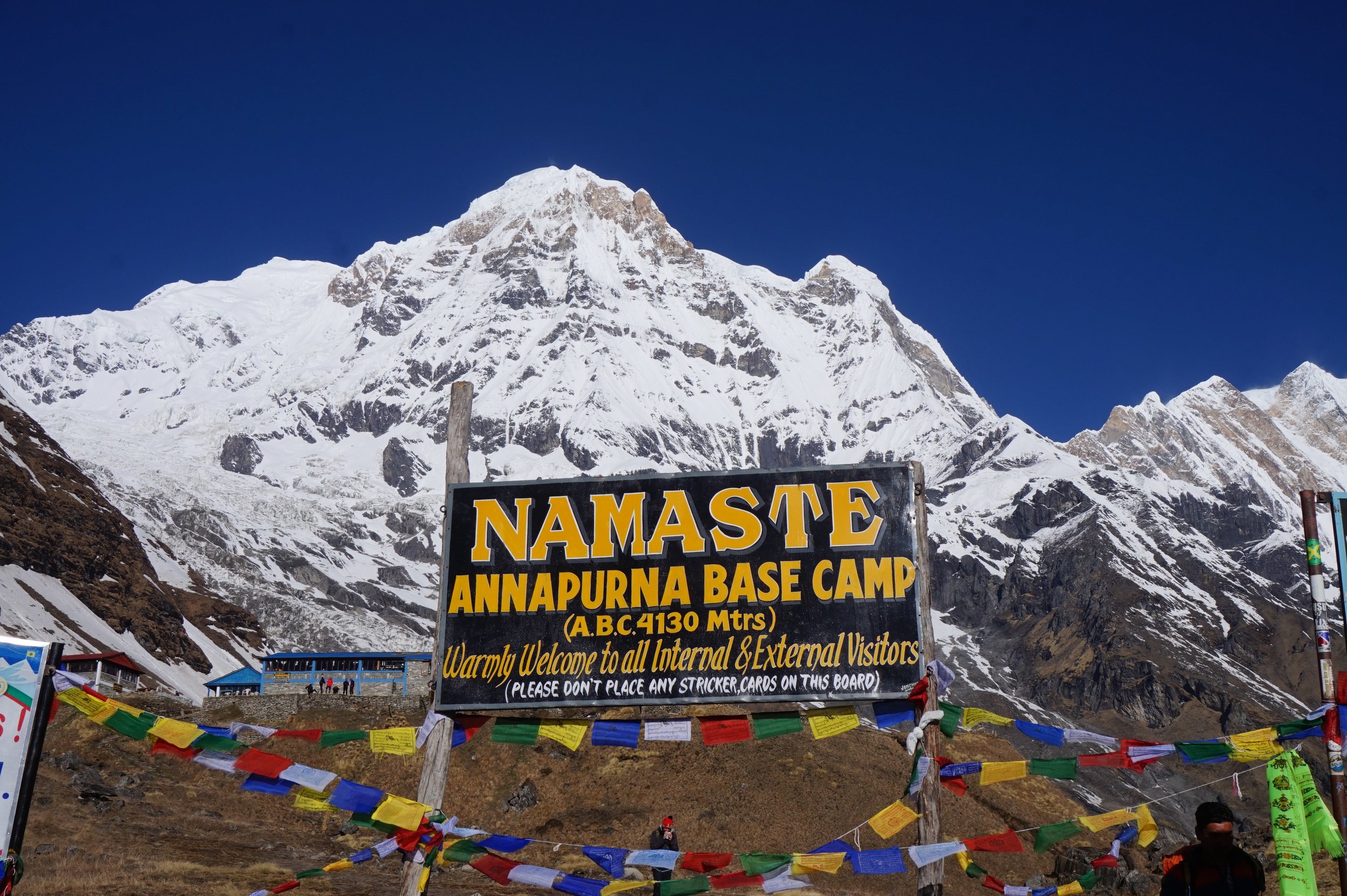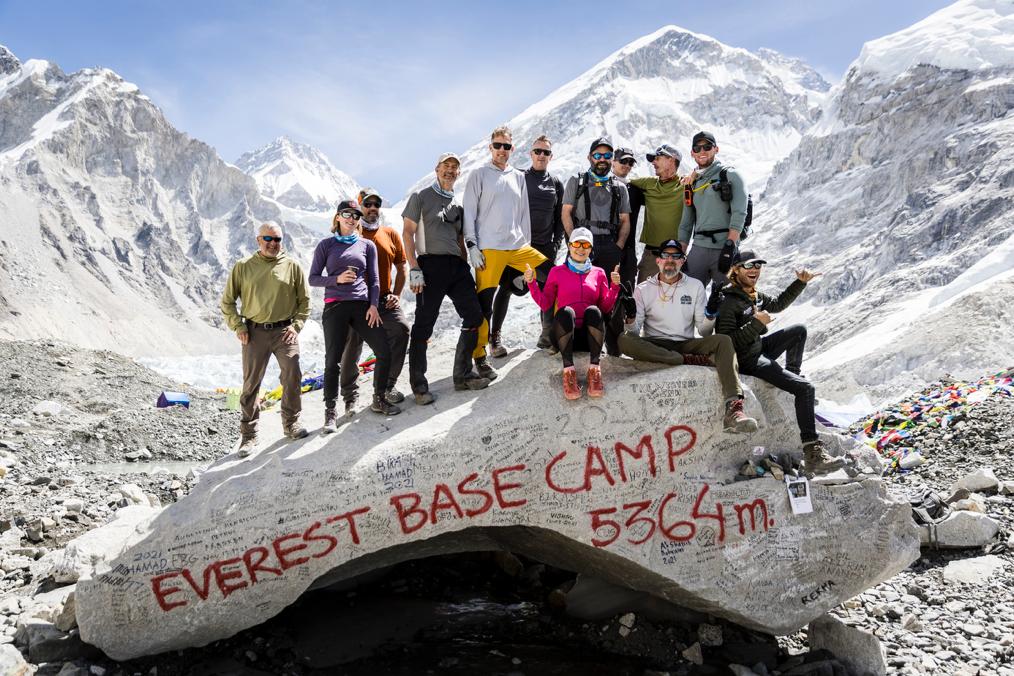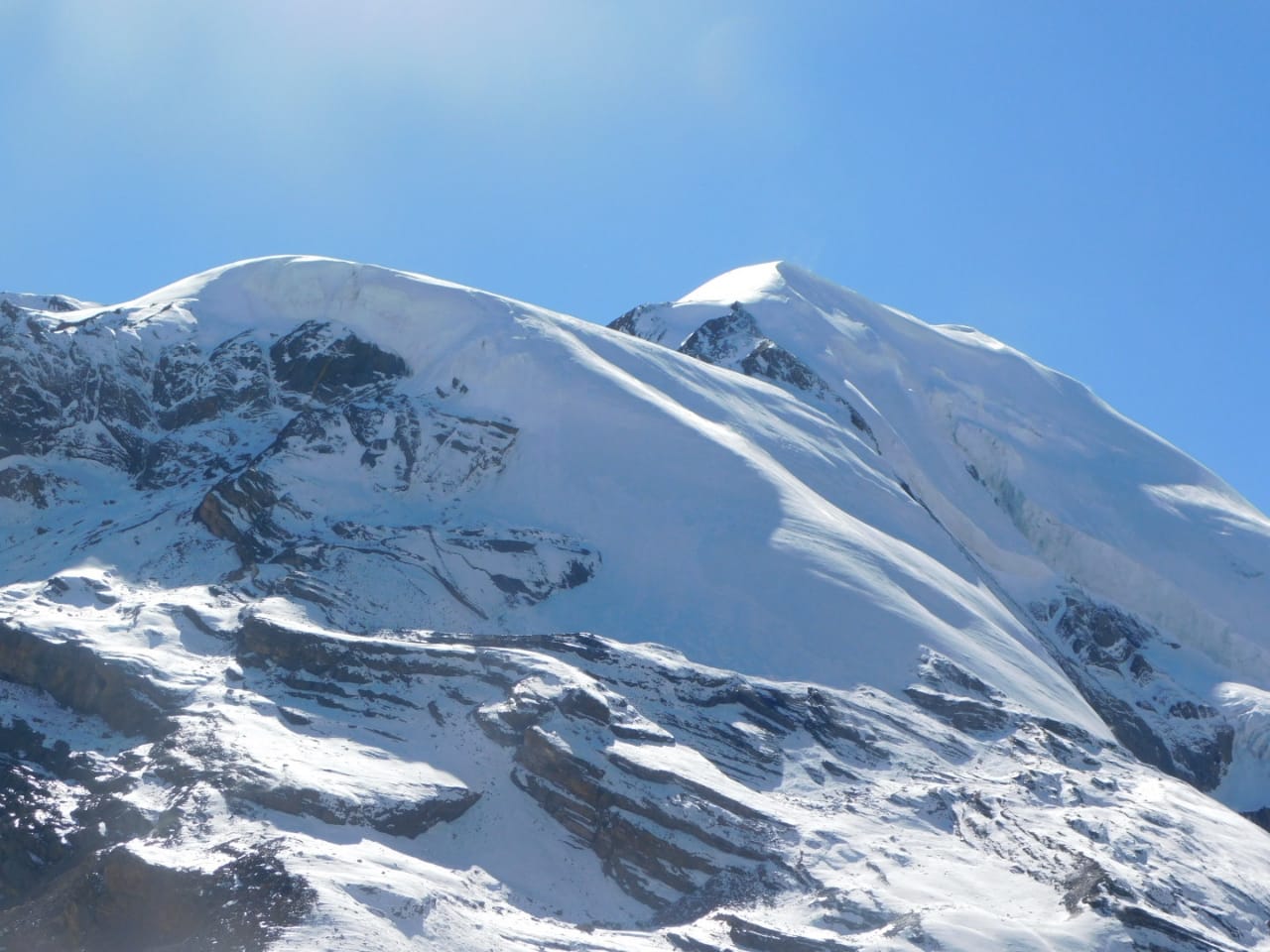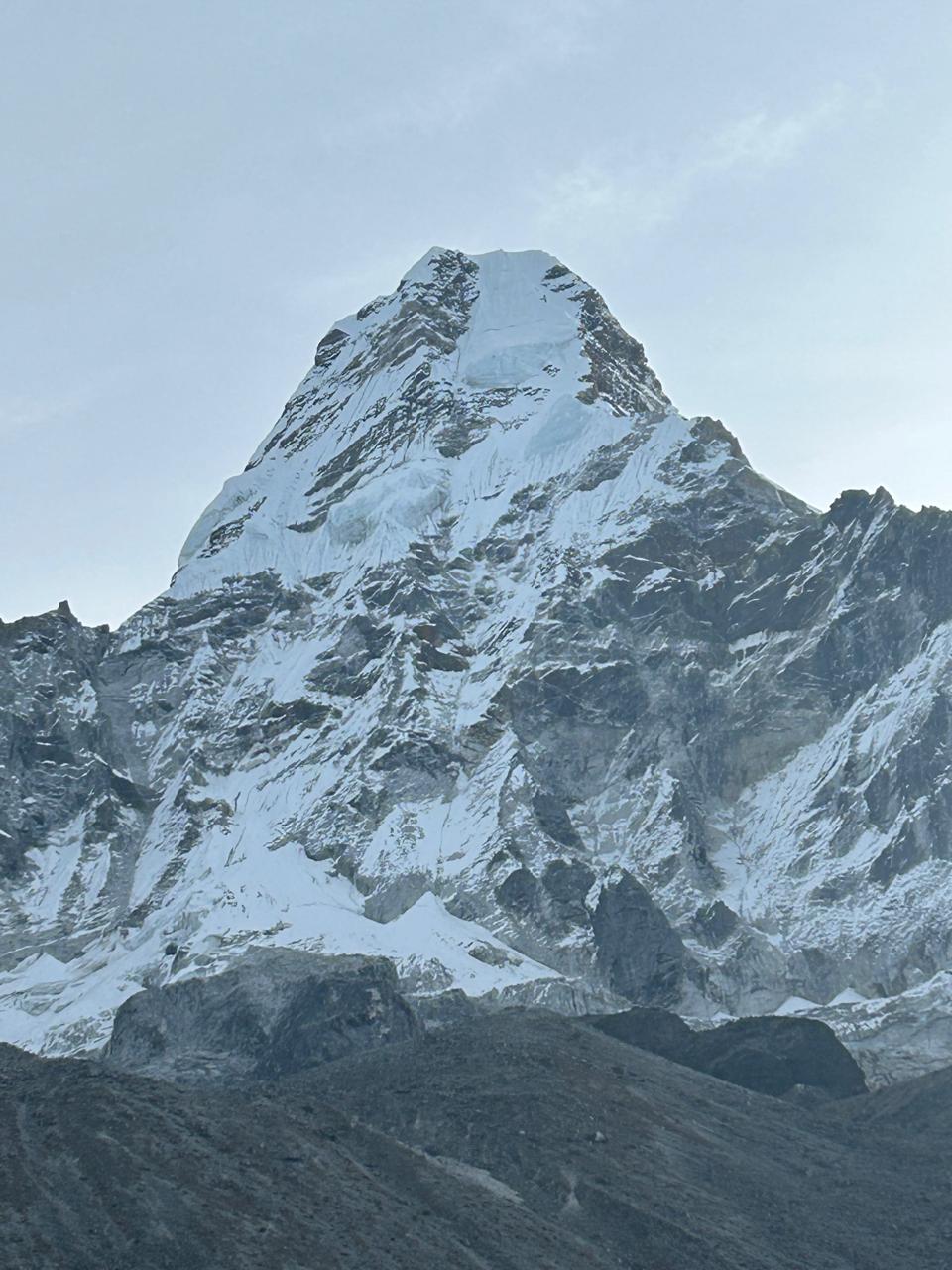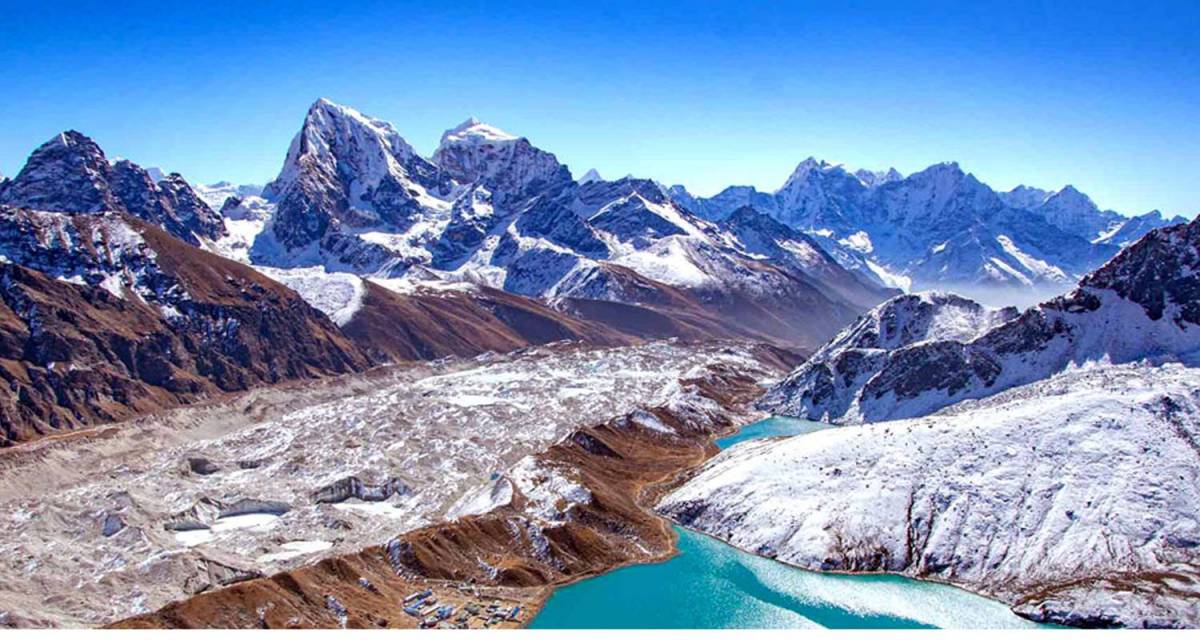Lobuche East is a prominent trekking peak located in the Khumbu region of Nepal, near the Everest Base Camp trail. Standing at an elevation of 6,119 meters (20,075 feet), it is one of the more accessible and popular peaks for climbers seeking a high-altitude experience in the Himalayas.
### **Geography and Location**
- **Location**: Khumbu region, northeast Nepal, within the Sagarmatha National Park.
- **Range**: Mahalangur Range of the Himalayas.
- **Coordinates**: Approximately 27.9667° N latitude and 86.8114° E longitude.
- **Proximity**: Close to the Everest Base Camp, between the Khumbu Glacier and the Lobuche Glacier.
### **Physical Features**
- **Summit**: Lobuche East features a rugged, pointed summit ridge, which offers spectacular views of the surrounding peaks, including Everest, Lhotse, Nuptse, Ama Dablam, and Pumori.
- **Terrain**: The climb involves a mix of rock scrambling and snow/ice climbing, making it technically more challenging than some other trekking peaks in the region.
- **Approach**: The approach to Lobuche East passes through alpine meadows, glacial moraines, and high mountain passes, providing a diverse and scenic journey.
### **Climbing Route**
- **Base Camp**: Typically set up at around 4,950 meters, near the village of Lobuche.
- **High Camp**: Positioned at approximately 5,600 meters, on a ridge that provides access to the summit.
- **Summit Route**: The final ascent involves steep snow and ice slopes, requiring the use of crampons, ice axes, and ropes. The ridge to the summit is narrow, requiring careful navigation.
### **Climbing Difficulty**
- **Grade**: Considered a trekking peak, but with sections that require basic mountaineering skills. The climb is classified as PD+ (Peu Difficile+), meaning "a little difficult."
- **Technical Aspects**: Climbers should be familiar with glacier travel, fixed ropes, and crevasse navigation.
### **Climate**
- **Spring (March to May)**: Clear skies, stable weather, and warmer temperatures make this the ideal season for climbing.
- **Autumn (September to November)**: Another favorable season, with clear post-monsoon skies and excellent visibility.
- **Winter and Monsoon**: Harsh weather, heavy snowfall, and poor visibility make climbing extremely difficult.
### **Views from the Summit**
- **Panorama**: The summit offers a 360-degree view of the Everest region, including close-up views of Everest, Lhotse, Nuptse, and Ama Dablam.
- **Surrounding Peaks**: In addition to the big names, you can see other prominent peaks like Makalu, Baruntse, and Thamserku.
### **Cultural and Environmental Significance**
- **Sagarmatha National Park**: Lobuche East lies within this UNESCO World Heritage site, home to diverse flora and fauna, including the endangered snow leopard and red panda.
- **Sherpa Culture**: The journey to Lobuche East passes through several Sherpa villages, offering climbers the opportunity to experience the unique culture and hospitality of the Sherpa people.
Lobuche East is an excellent choice for climbers looking for a challenging but achievable peak in the Everest region. It offers an unforgettable experience with breathtaking views, technical climbing challenges, and a deep connection to the natural and cultural beauty of the Himalayas.
